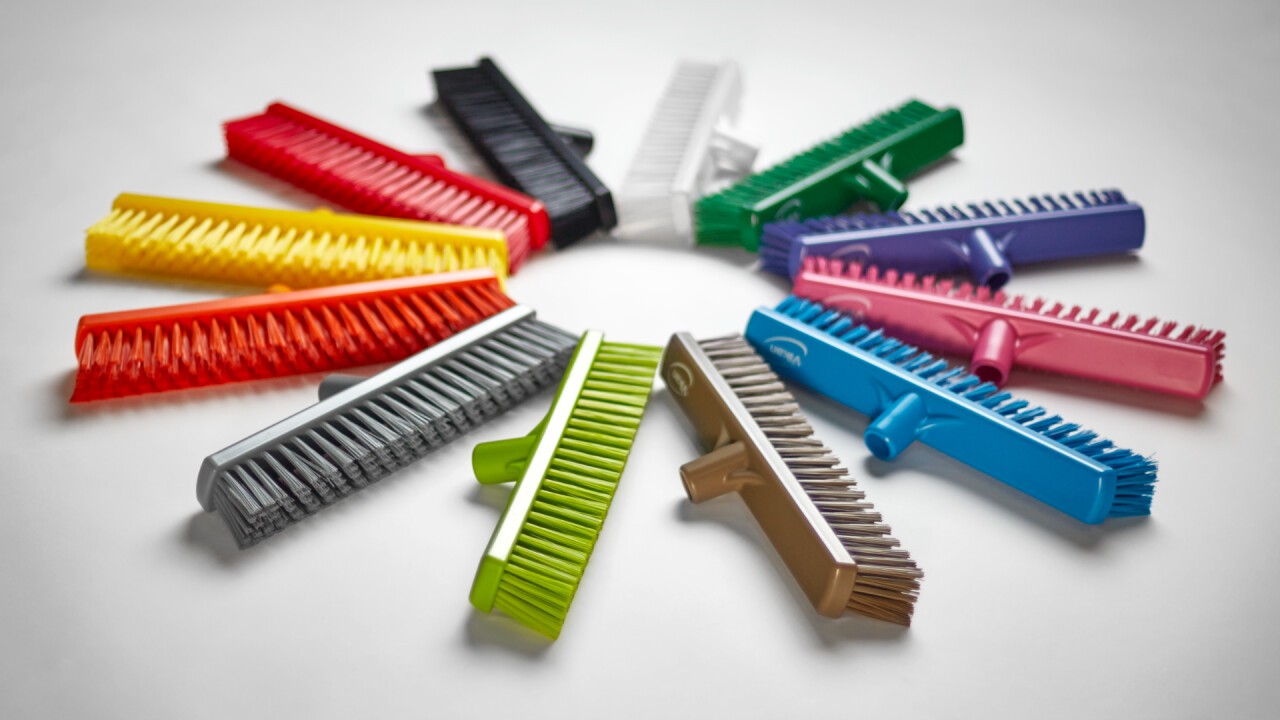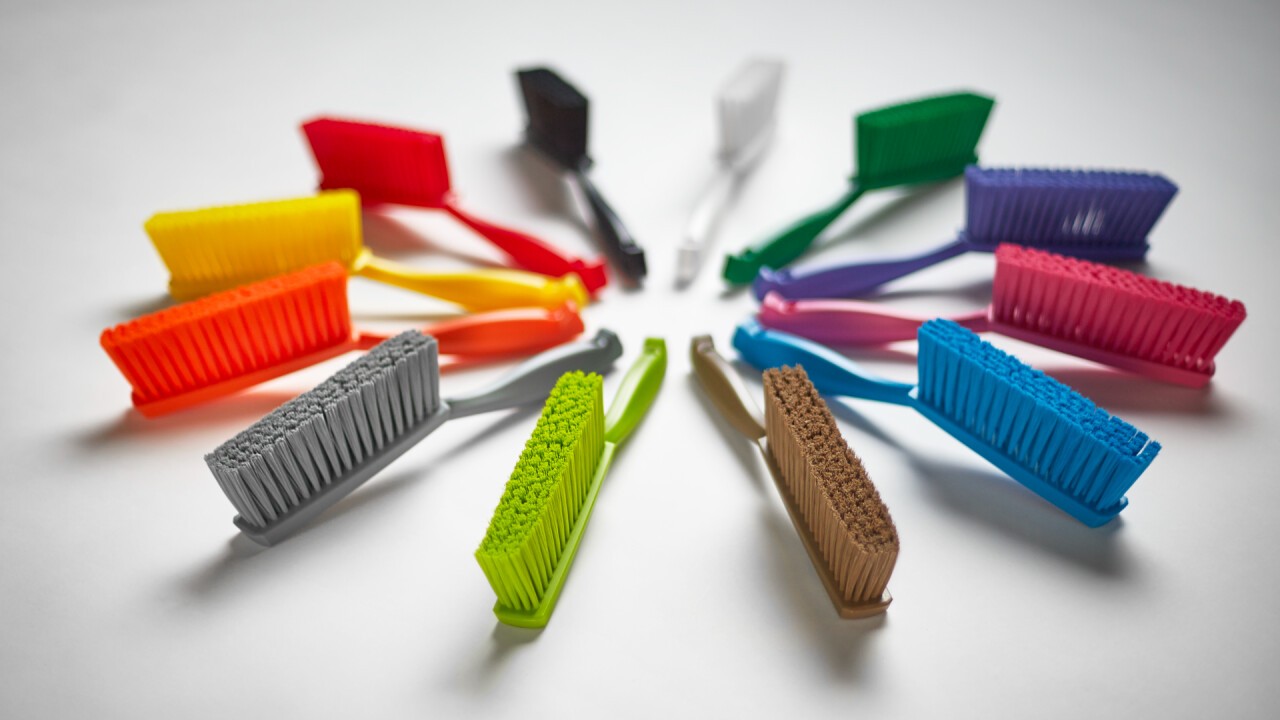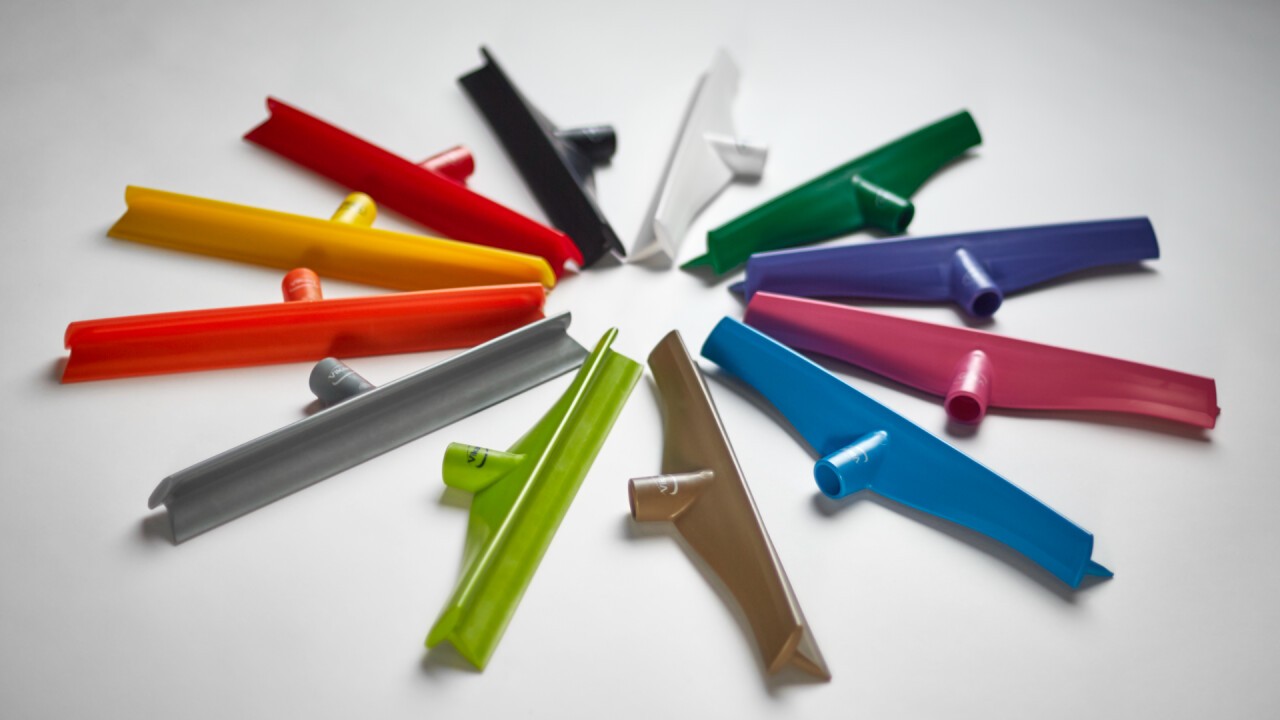Simply put, food safety is essential when producing foods. Segregating cleaning equipment, food handling tools and other equipment into well-planned, colour coded areas enables you to achieve even more in the food safety field by reducing the risk of cross-contamination from one area to another.
How Colour Coding works
Colour-coded segregation helps minimise the risk of product cross-contamination from microbes and food residues, including allergens, chemicals, and foreign bodies. It works by assigning cleaning tools a specific colour for use in designated areas and tasks.
For example, red tools can be used in high-risk areas, and yellow ones in low-risk areas. Blue tools could be used to clean surfaces that come into contact with food, while green ones could be used for cleaning floors. This makes it easy to identify if tools are in the wrong area or are being used for the wrong task.
5S LEAN and colour coding
The use of colour coding of tools and equipment is in line with the 5S LEAN system, which uses five steps – Sort, Set in order, Shine, Standardise and Sustain – to ensure the correct order, systematisation and ownership in a food production facility.
How to get started
Colour coding is easy to implement if done correctly from the start.
Vikan can help you get started with colour coding, or update your current plan. We will conduct a Vikan Site Survey and develop a Hygienic Zone Plan specifically for your facility – all free of charge. The service also includes a cleaning tool management plan.
We also have a colour coding guide that gives you a brief introduction to the benefits of colour coding – and some practical tips on how to put it into practice.
Meet our experts at the fair to learn more. We look forward to seeing you.


